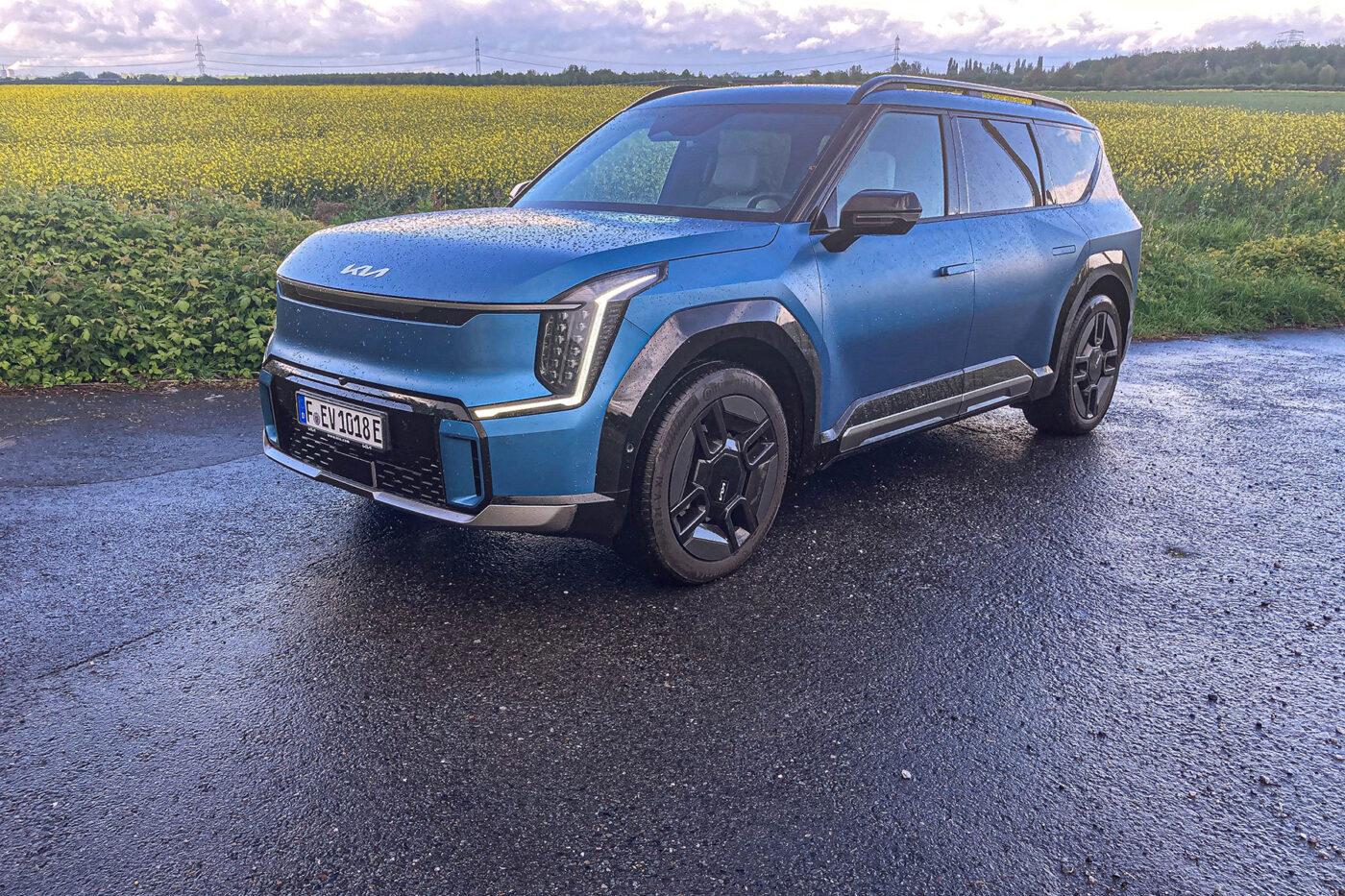
Testing the Kia EV9 – the South Korean luxury SUV
In the 1980s, the German automobile industry decried that Japan was moving to export its cars to Europe. A decade later, South Korean companies like Hyundai and Kia were seen as the new threat. With their emphatically simple and affordable cars, the new manufacturers catered to customer groups that the German carmakers could no longer reach. However, the reputation of South Korean cars was not good at first: to put it kindly, they were not considered to be of particularly high quality and only partially reliable, but they were cheap.
Almost 30 years later, the development could hardly be more dramatic. In front of us is a test car for well over 82,000 euros – with the Kia logo on the bonnet. As a rear-wheel drive model, the EV9 is “already” available from 72,490 euros, but for the test, Kia sent the all-wheel drive model in GT Line equipment. The brand has developed enormously since its European launch and, thanks to its affiliation with the Hyundai Group and access to its platforms, has brought ever-better cars onto the market. Kia has used the shift towards electric mobility to expand its own range upwards.
The result, which is being tested here, is the EV9 – a 5.01 metre-long electric SUV that is actually aimed at the Asian and American markets. However, as Kia sees the potential to sell a few vehicles in Europe as well, the EV9 is also offered in Germany. And with data that is quite impressive. The battery holds 99.8 kWh, can be charged to 80 per cent in less than 25 minutes thanks to the 800-volt system and the electric all-wheel drive with two motors, it delivers 283 kW.
Not just the data that impresses
However, our experience after over 1,000 kilometres in the EV9 also shows that it is not just the figures on paper that are convincing, but also the things that cannot be easily squeezed into a table of technical data – driving behaviour and software, to name just two examples. However, nothing is perfect and there is room for improvement in the EV9.
Take fuel consumption, for example. A car as large and angular as the EV9 is, of course, no miracle when it comes to consumption, but even at temperatures in the double-digit range, the EV9 could only be brought below 20 kWh/100 km on routes that were driven very efficiently. With the driving style in our test, the average was 25.4 kWh/100km, which gives a calculated range of 391 kilometres. The onboard computer of the test car was last reset 3,334 kilometres ago and shows an average of 27.5 kWh/100km for this route, although we cannot make any statement about the driving style of other users. With this consumption, 361 kilometres would still be possible with a full battery charge – and if you calculate the usual long-distance range of ten to 80 per cent charge level, this results in only 262 kilometres between two charging stops.
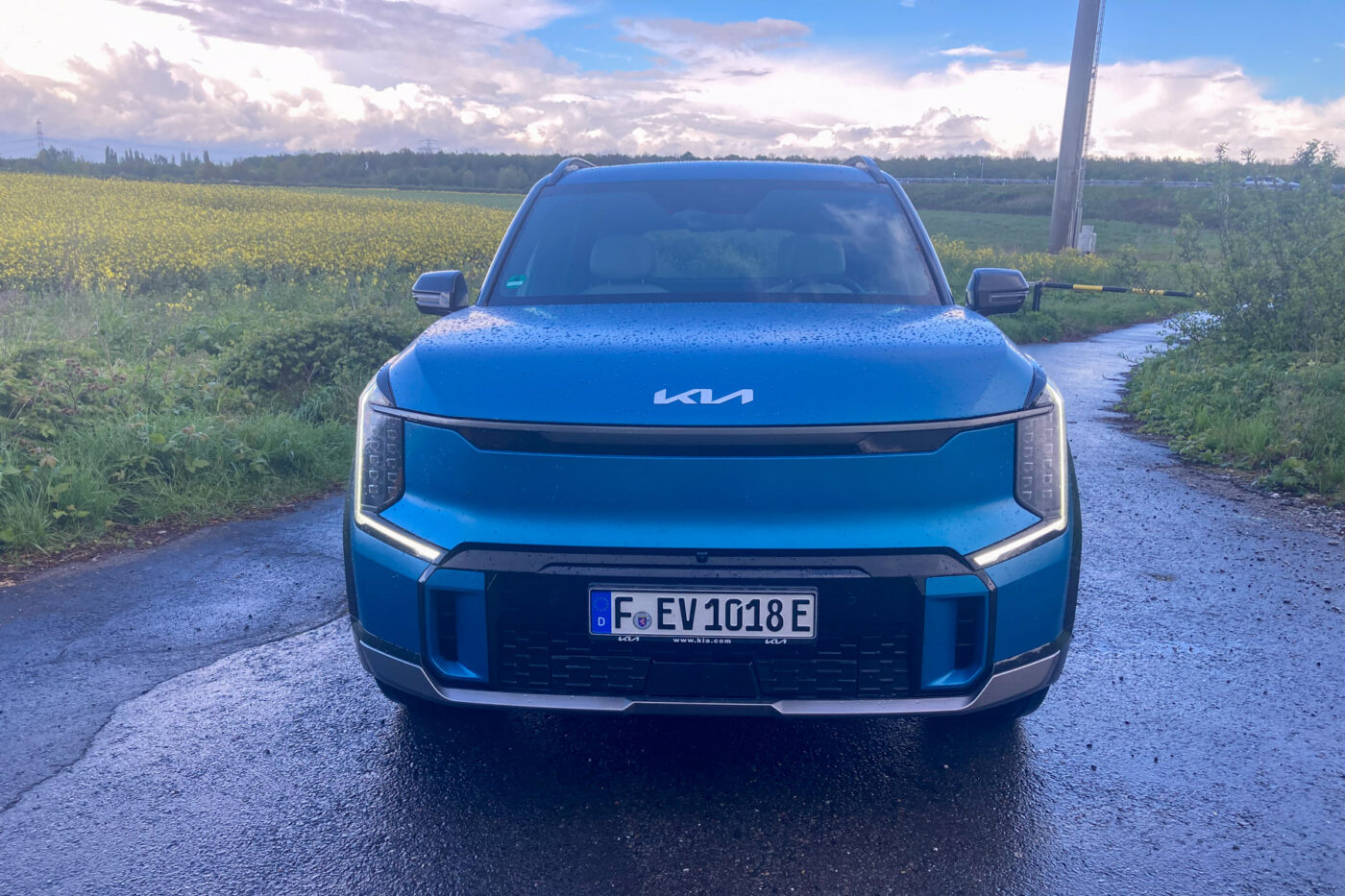
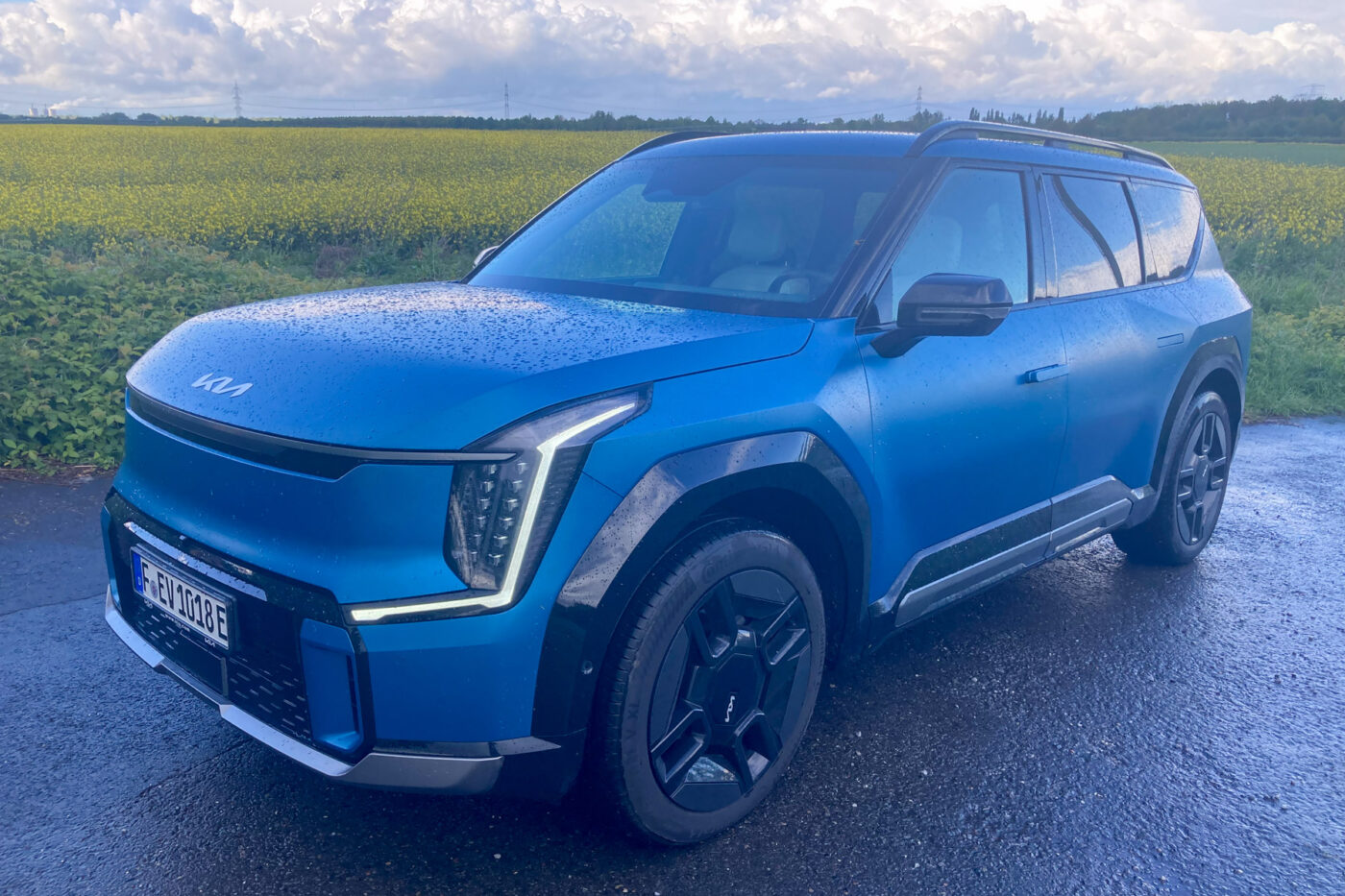
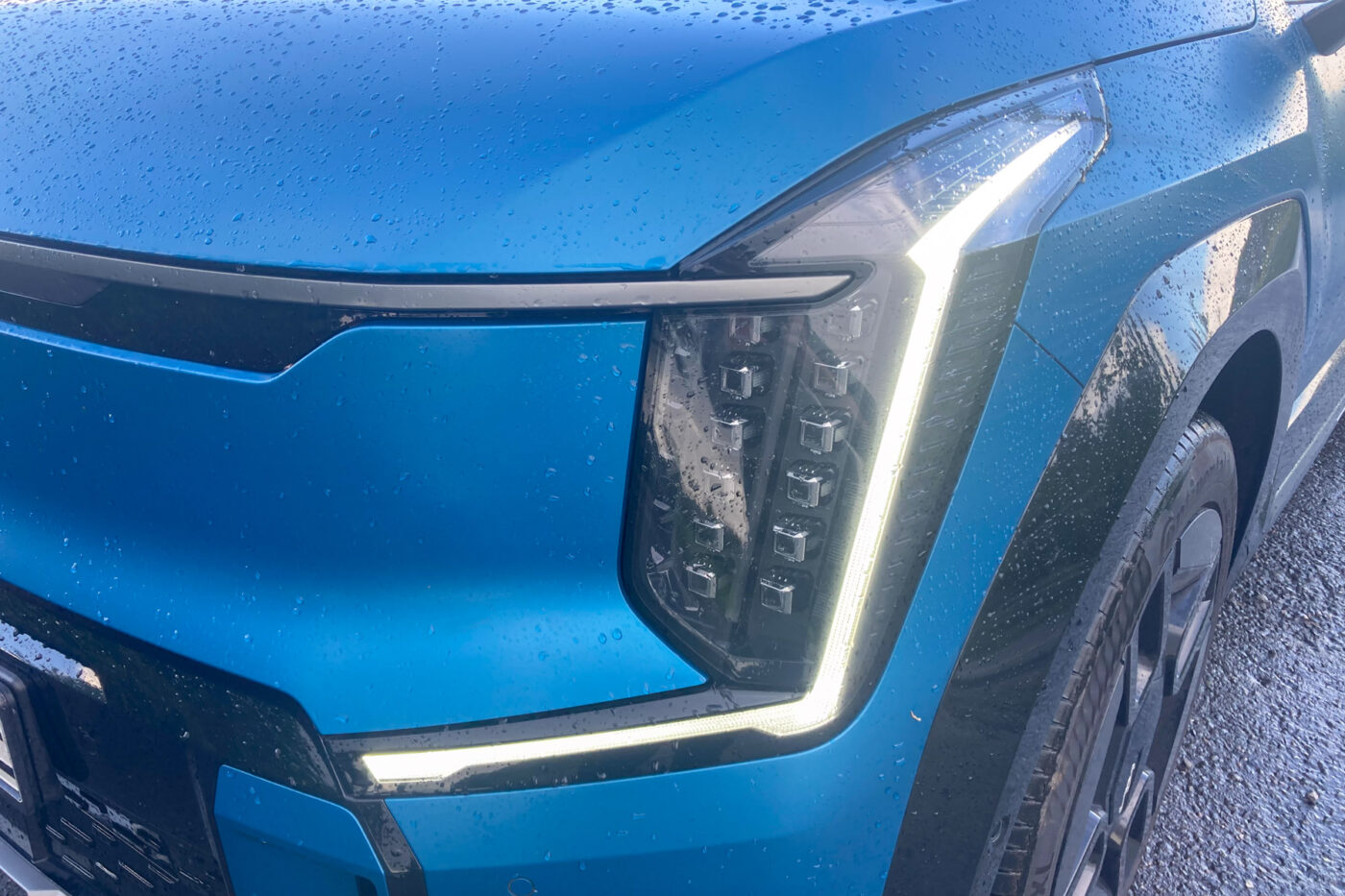
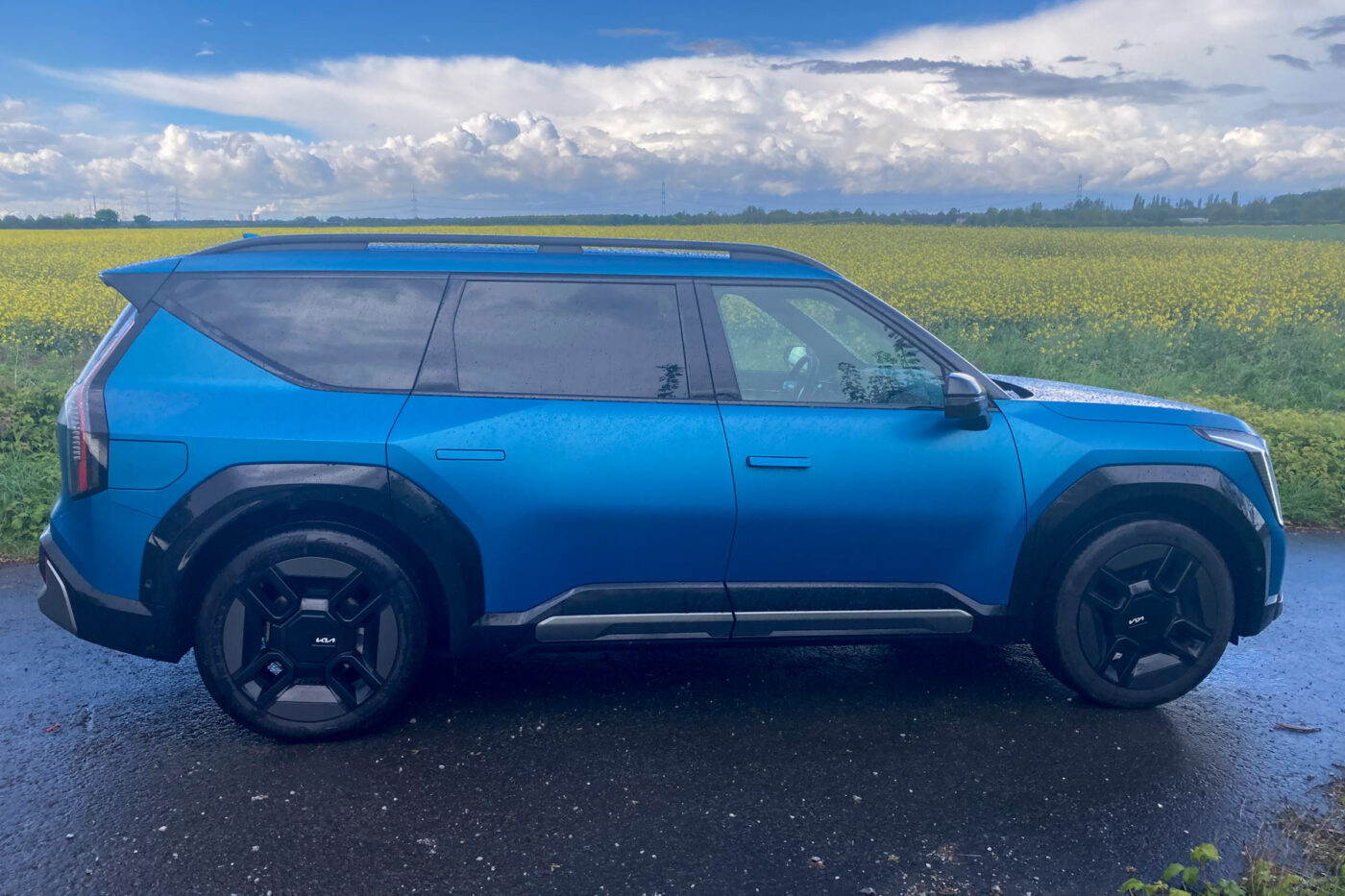
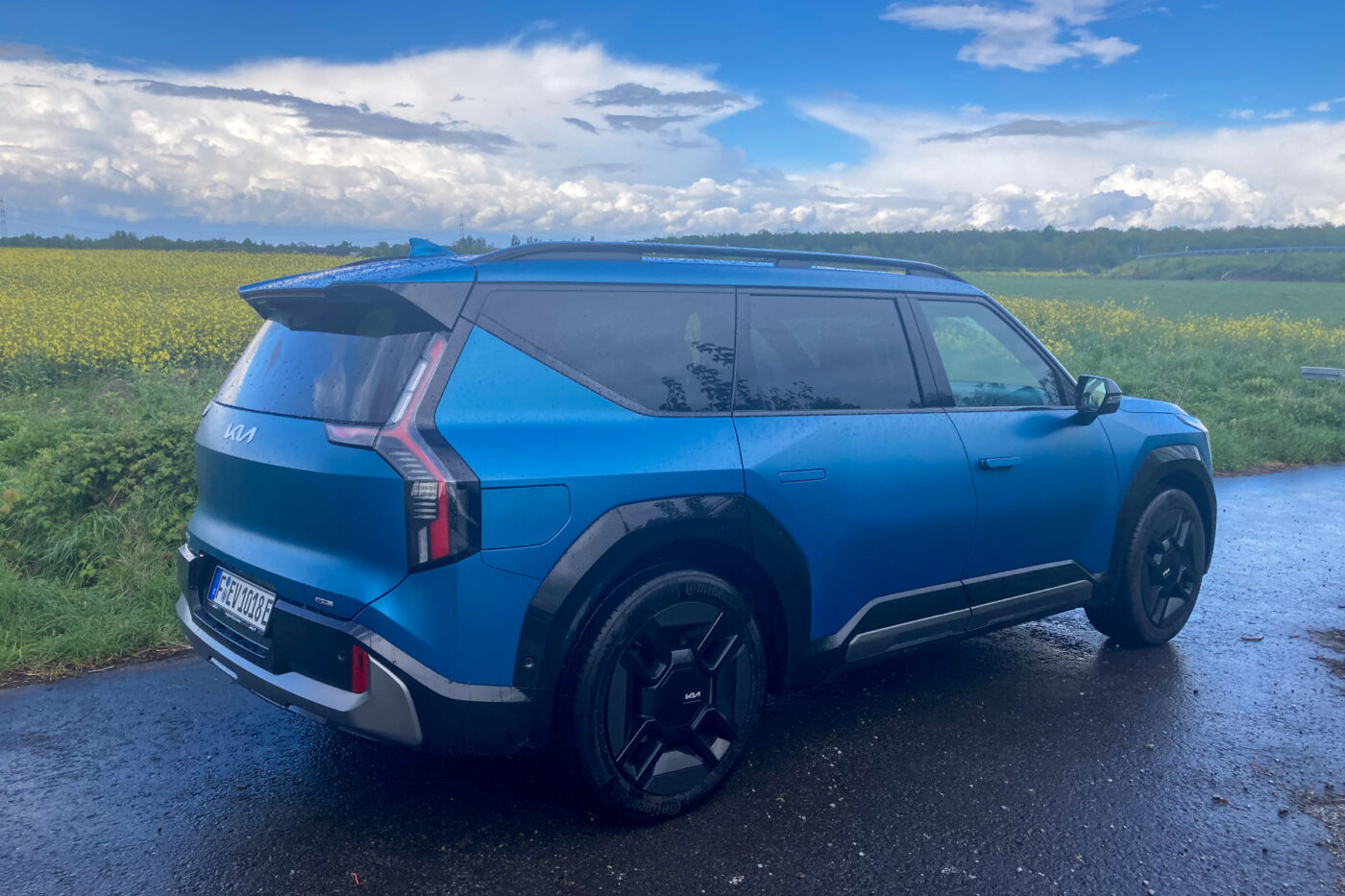
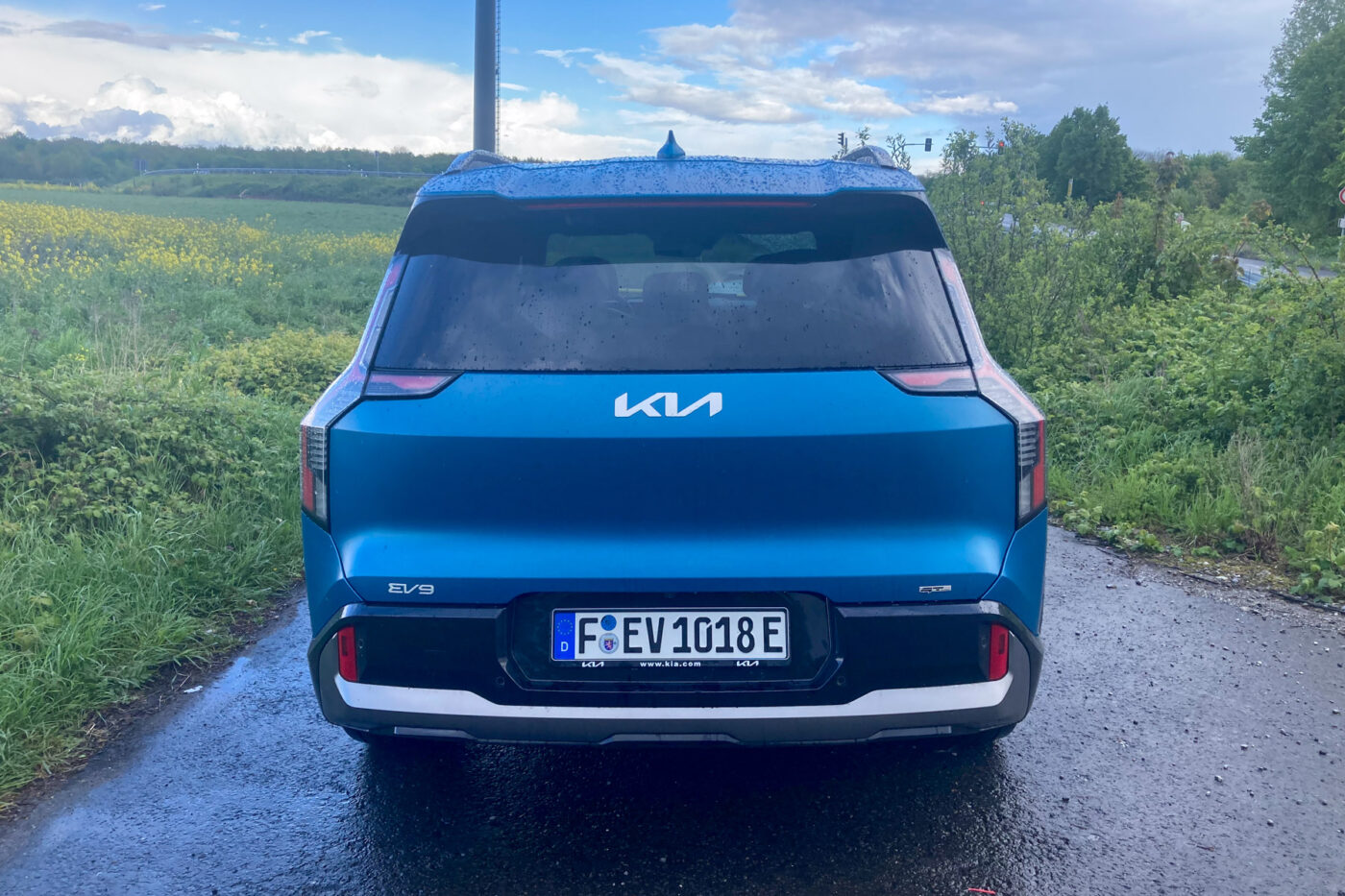
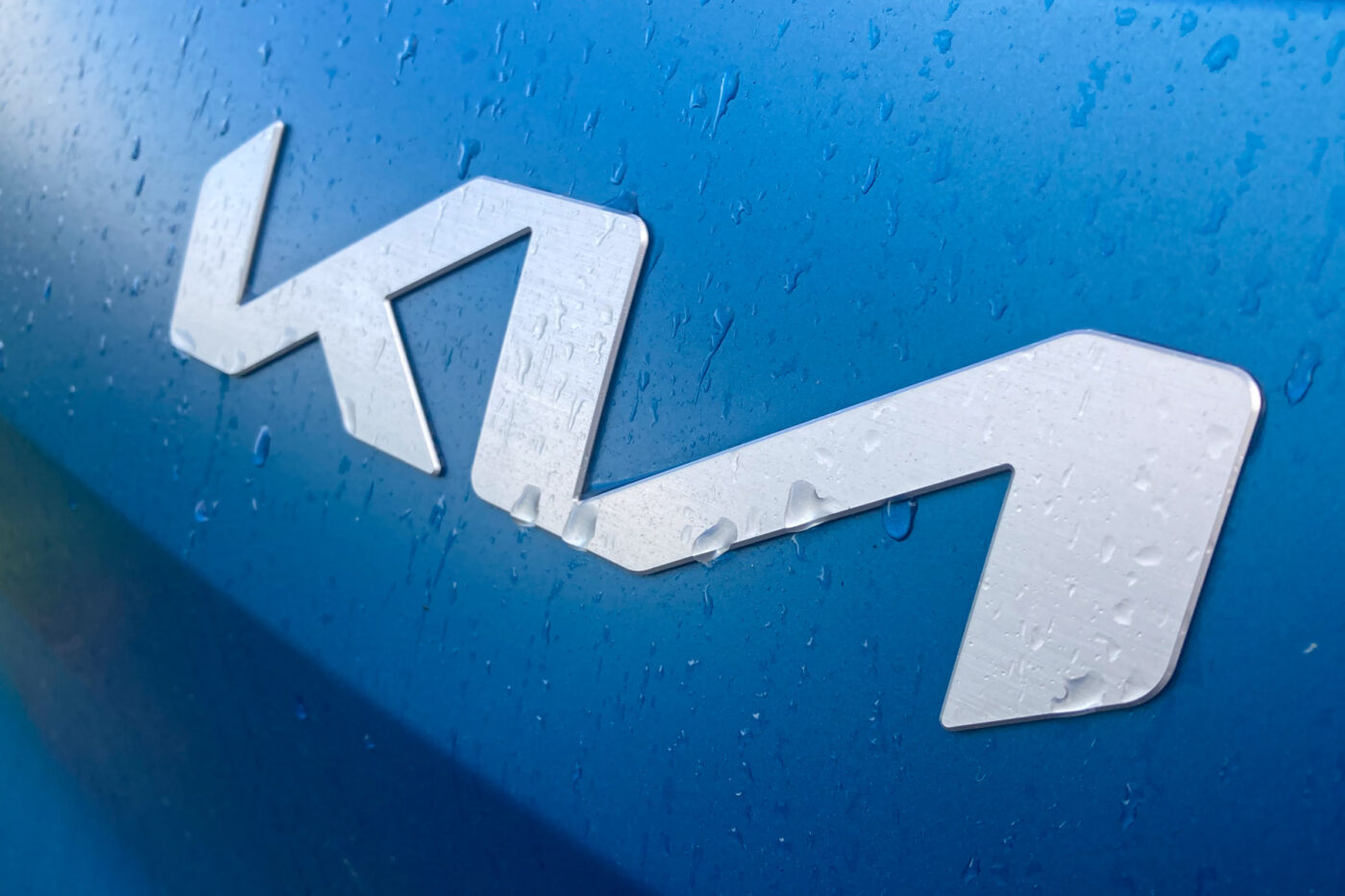
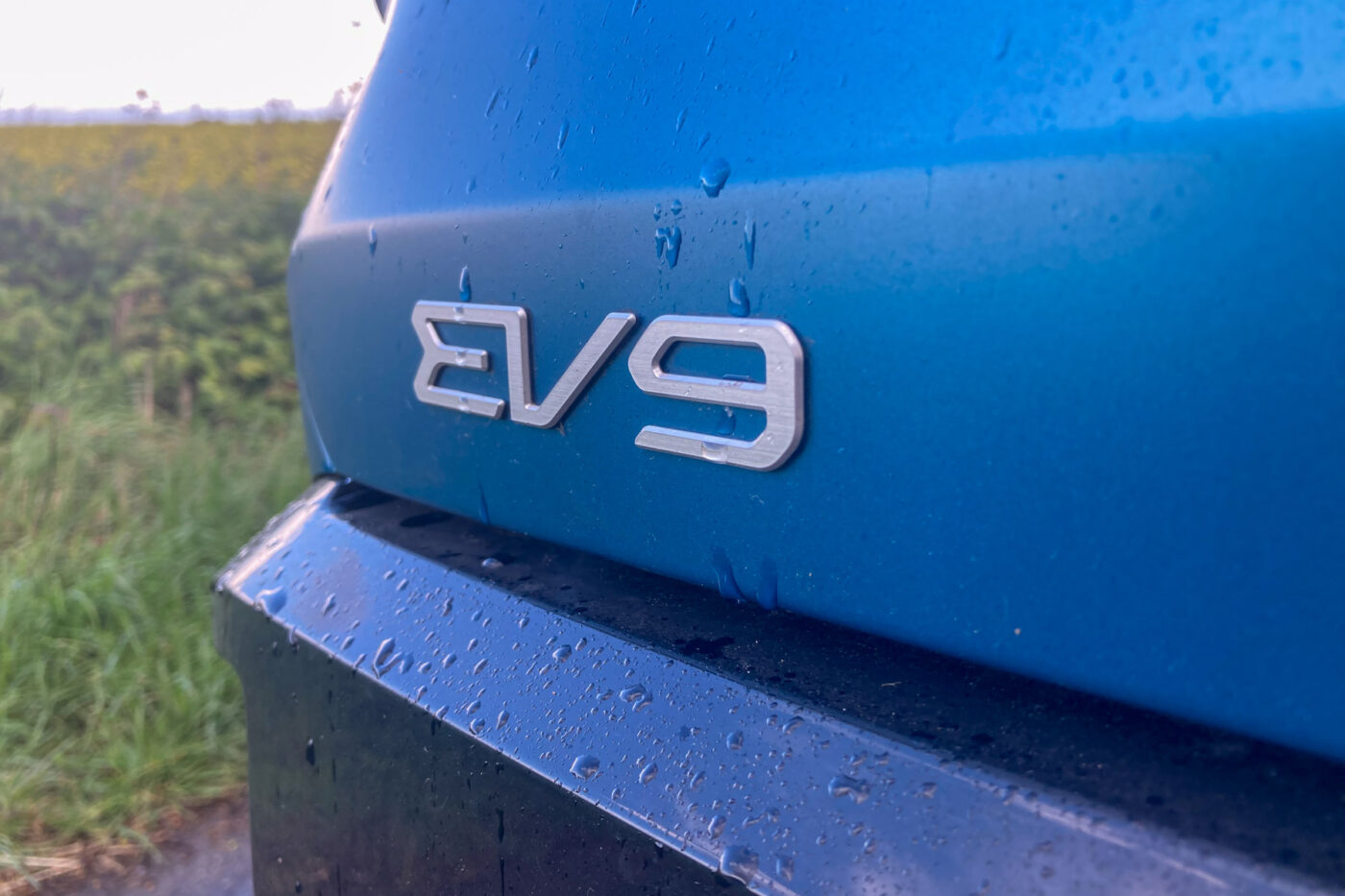
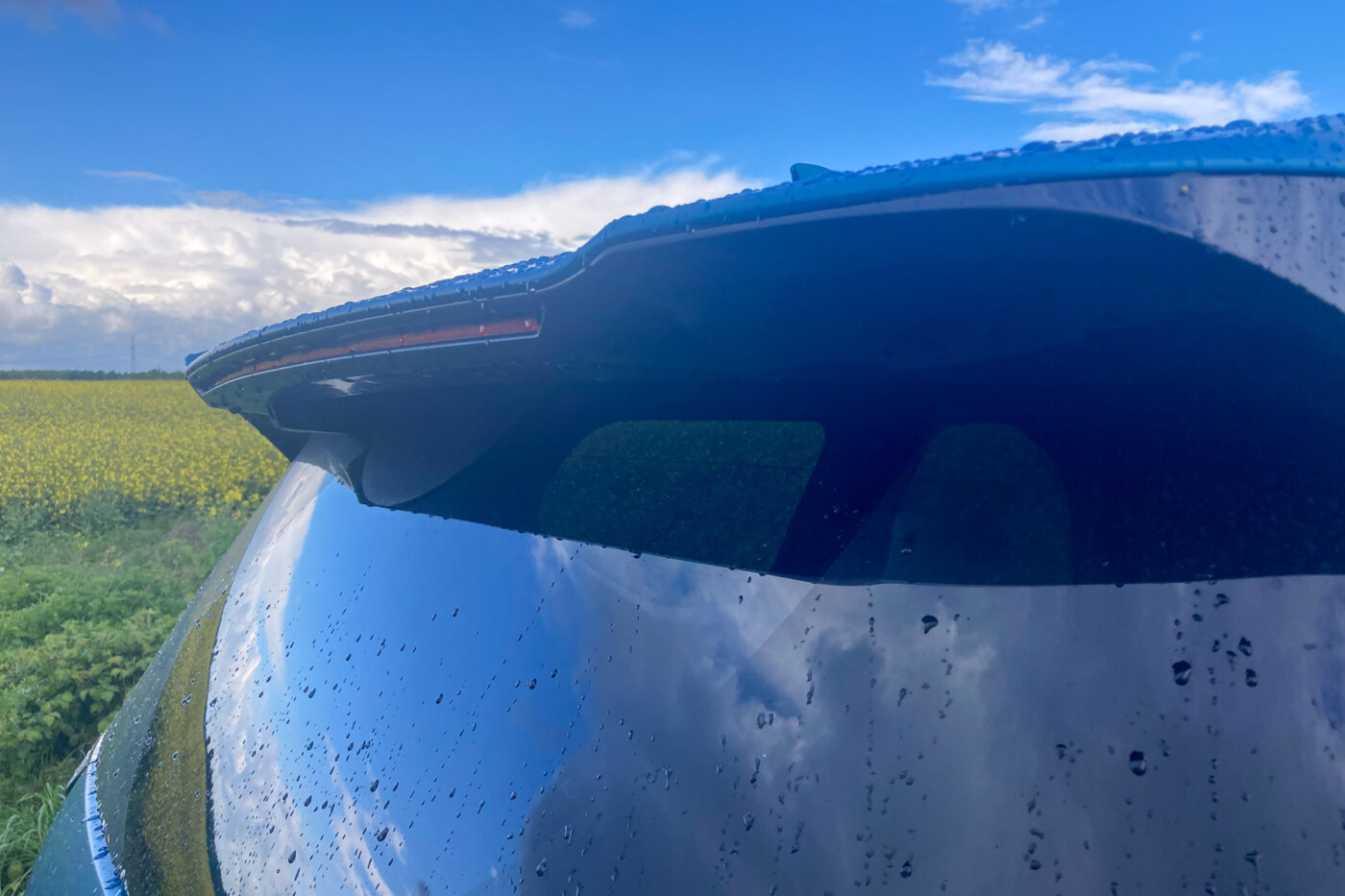
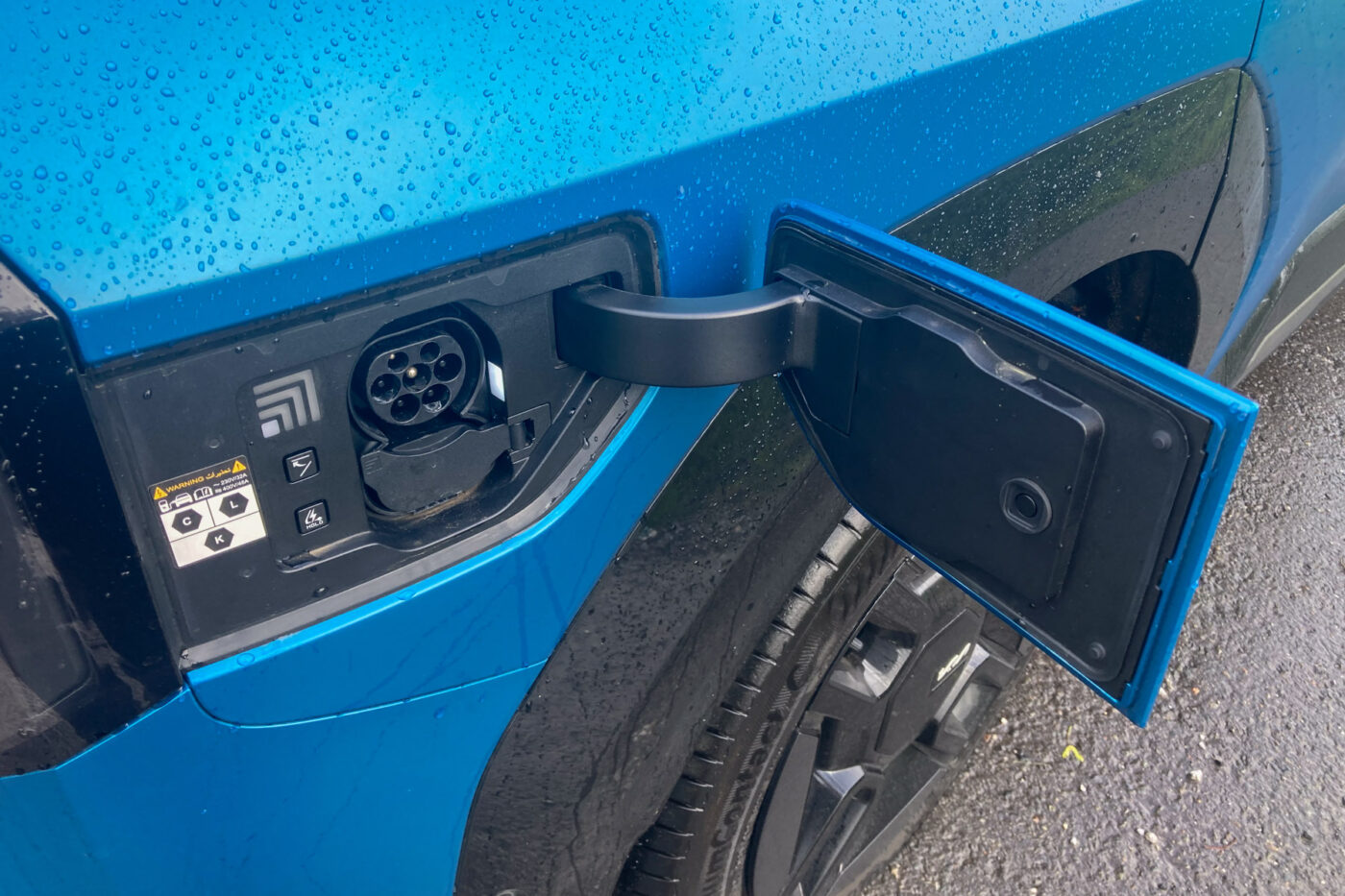
For large parts of our test, we were travelling in very good conditions. On a section of the motorway, we were able to see that consumption can be noticeably higher in poorer conditions. It had cooled down to just four degrees overnight, the embankment was lightly covered in snow, the road was damp – and the interior temperature was set at 21 degrees. And the fuel consumption in the 120-130 kph speed range rose towards the 30 mark. That brings the calculated real-world range closer to 300 kilometres and the 70 per cent value in the order of 215 to 230 kilometres. For a car with a 99.4 kWh battery. Considering the aerodynamics with the high, massive front and the steeply sloping rear, which leaves a large hole in the air, this is almost an expected result. Every extra kilometre per hour on the motorway has a noticeable effect on fuel consumption. On the test average with country roads and some city traffic, however, the range is fine again.
In addition to range, a good long-distance electric car also needs good charging behaviour. And this is where the EV9 can play to its strengths. However, the charging curve differs significantly from other models on the E-GMP platform, which the EV9 also uses. The 77.4 kWh battery, familiar from the EV6 or Hyundai Ioniq 5, charges at up to 240 kW at its peak, but reduces somewhat at higher charge levels. Not so in the EV9: here we didn’t see more than 205 kW on the display. On the other hand, an output of around 200 kW is constantly available up to just over 60 per cent charge level. And even then, the power is initially only reduced to 175 kW before dropping to 104 kW at 80 per cent. A constant 200 kW over this wide range is nevertheless remarkable. Such a constant charging curve is almost reminiscent of the BMW i3 – only by a factor of 4 higher.
While there is little to criticise about the fast charging itself, the charging planning is still not quite ideal: the Kia always planned the charging stops on the way to the destination up to 100 per cent, which is unrealistically long, however, this can be altered in the vehicle’s settings. The sat nav’s initial prediction of when you will arrive at your destination is therefore not useful. A detail criticism that you might be able to get over in another price category. However, the fact that an 80,000-euro car does not have a function that numerous free smartphone apps offer could be improved.
The selection of charging stations that the sat nav should take into account, on the other hand, can be filtered well – for example by provider or charging capacity. If a fast charging stop is automatically scheduled, the car automatically preconditions the battery so that it is in the optimum temperature window on arrival. However, it is also possible to start preconditioning manually in the menu. Although this is sometimes not quite as targeted as the automated option, some electric car drivers prefer manual control. Sometimes manual preconditioning is simply necessary if, for example, a new charging station is not yet stored in the system. The Kia enables both.
Minor criticism of the driving modes
For the drive, the E-GMP relies exclusively on permanently excited synchronous motors. Unlike the EV6, where a more powerful motor is installed on the rear axle of the all-wheel drive models than at the front, the EV9 has two equally powerful motors with 141 kW each on the axles. However, the logic of the driving modes remains the same: in Normal and Sport mode, both electric motors are active, while in Eco mode, the front drive is disconnected with a mechanical clutch – without this clutch, the PSM would cause drag losses. In other words, in Eco mode, you are travelling with half the power. That is more than sufficient for normal everyday driving, even in such a large car. One point that I would personally like to see changed: even during a kickdown, for example for an overtaking manoeuvre, the front engine is not switched on in Eco mode. So you’re sitting in a 385-hp car, but you have to change the driving mode in order to access this.
However, if both motors are active, the acceleration typical of electric cars is also available. But I could actually imagine doing without the all-wheel drive in the EV9 if the car is not to be used as a towing vehicle (towing capacity: 2,500 kg). If it is more of a family car (instead of an electric van, for example), additional acceleration or traction is rarely needed. And the chassis is also – unsurprisingly – designed for comfort. If you do take a bend a little more quickly, the EV9 doesn’t take offence. However, its strength is clearly its calm and relaxed gliding along, whether on country roads or motorways. The Kia does this extremely well, especially as it only has steel suspension. It doesn’t come close to the air suspension that we were able to test in the Mercedes EQE SUV, for example – but it doesn’t lack much.
The difference between these two models is significantly greater in terms of space, although the EQE SUV is just minimally shorter. The Mercedes offers plenty of space for five adults, but not exactly ample, and the boot is also rather average for a 4.90 metre-long vehicle. The Kia, on the other hand, feels more like a van in terms of space. It is really only eleven centimetres longer, but the feeling of space is not comparable to the EQE SUV. Even with three adults in the back seat, there is plenty of space for everyone and the boot can hold over 800 litres (window height). With the rear seat bench folded down, the load volume is over 2,300 litres. If all seven seats are used, only 333 litres remain – seven seats are unthinkable in the Mercedes. Despite all this utility, there is a catch: the payload of the empty 2.6-tonne EV9 is only 574 kilograms. If all seven seats are occupied, there is hardly any load capacity left for luggage.
The EV9 can play the lorry to a certain extent, but not only impresses with its utility value but also in terms of comfort. As mentioned, the chassis is very pleasant on long journeys, but the seats also contribute to the comfort level. In the test car, the seats in the front five seats are comfortable, but not too softly upholstered – we won’t mention the two folding seats in the boot here. The Kia’s headrest, for example, shows that it doesn’t always have to be a heavy seat for good comfort: a thin and light mesh cover is enough to provide a very soft and comfortable resting place. It must be said, however, that we can only evaluate the relatively new test car here – and not how the mesh on the headrest will behave after seven years.
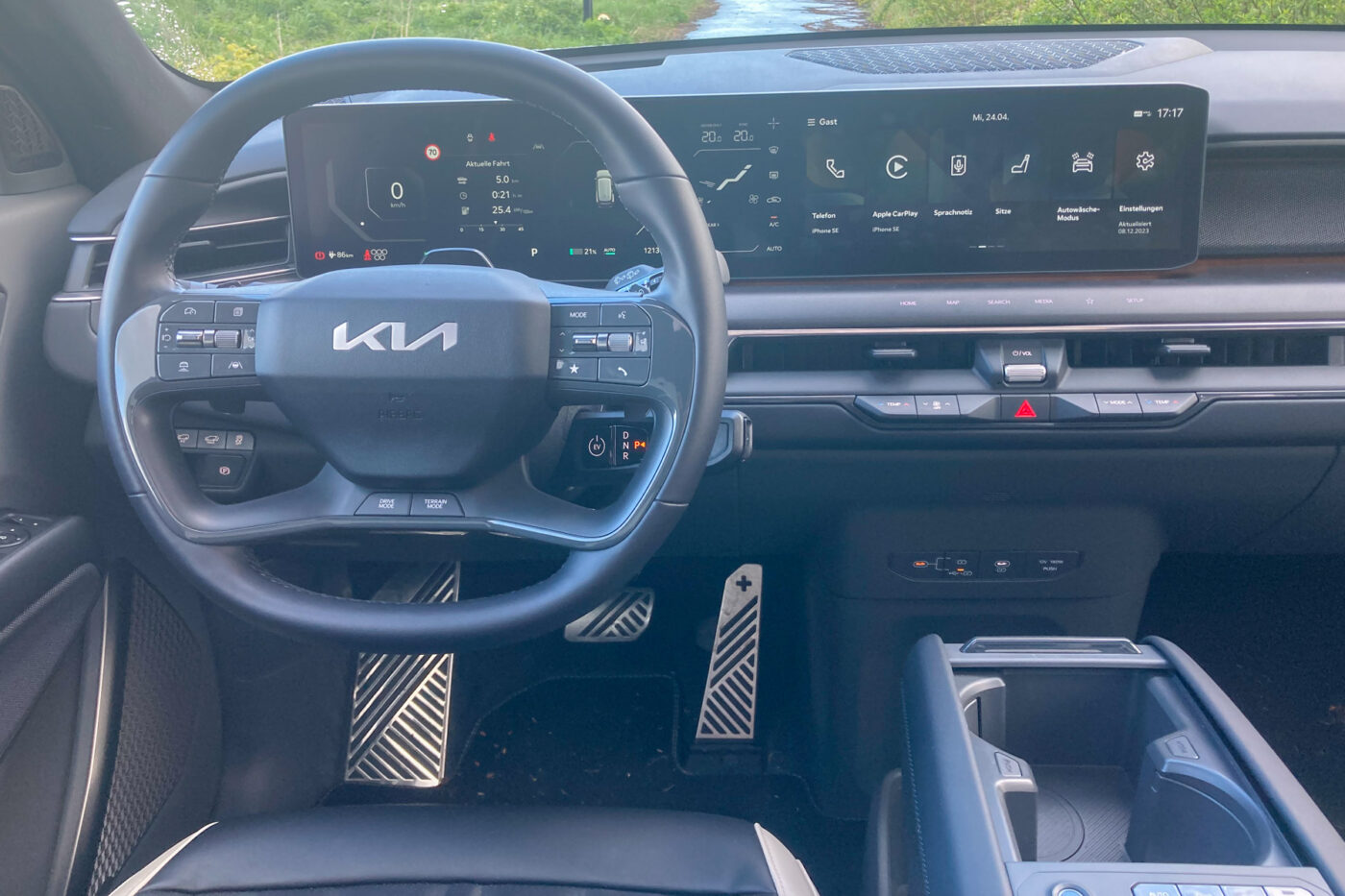
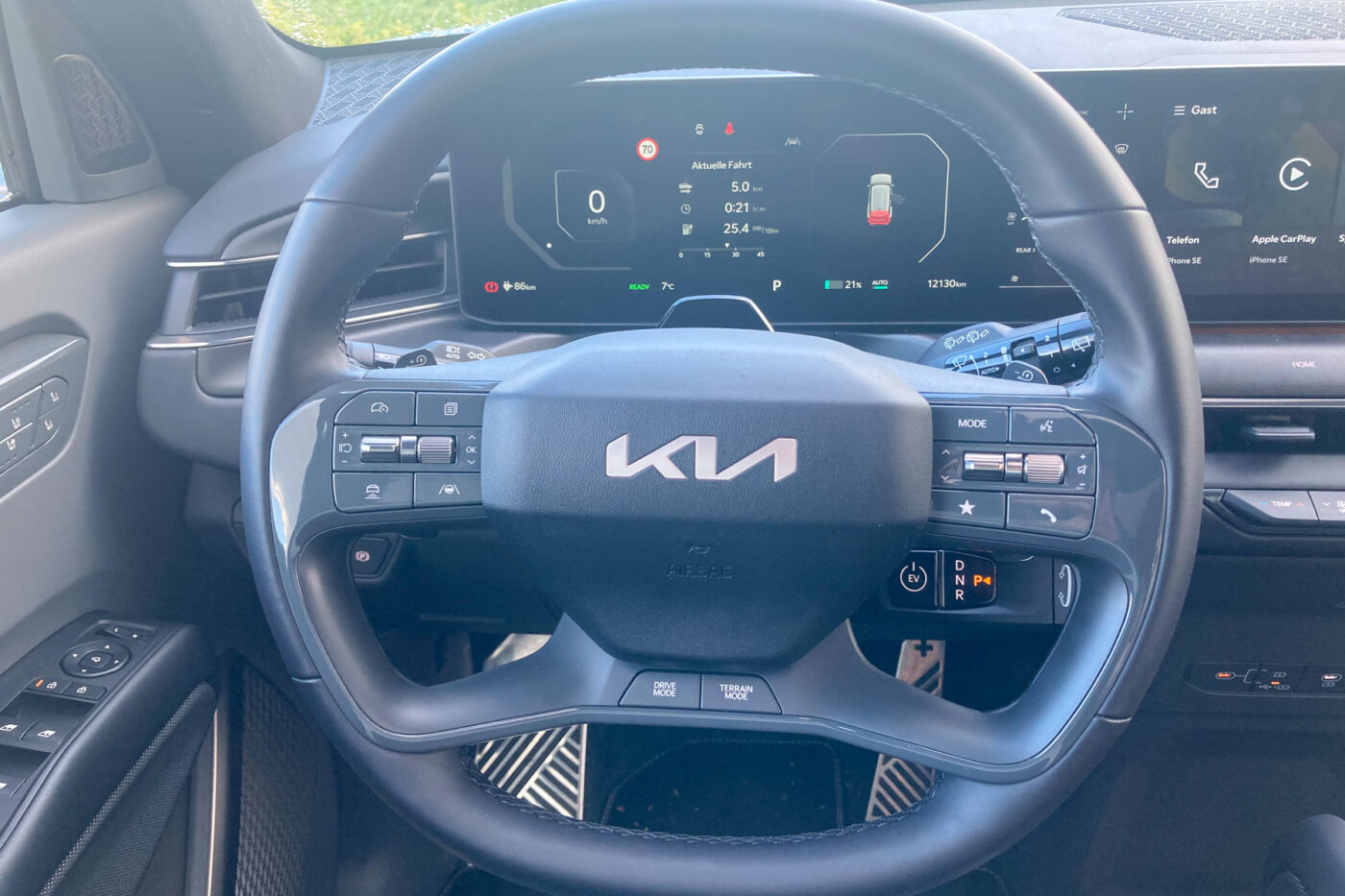
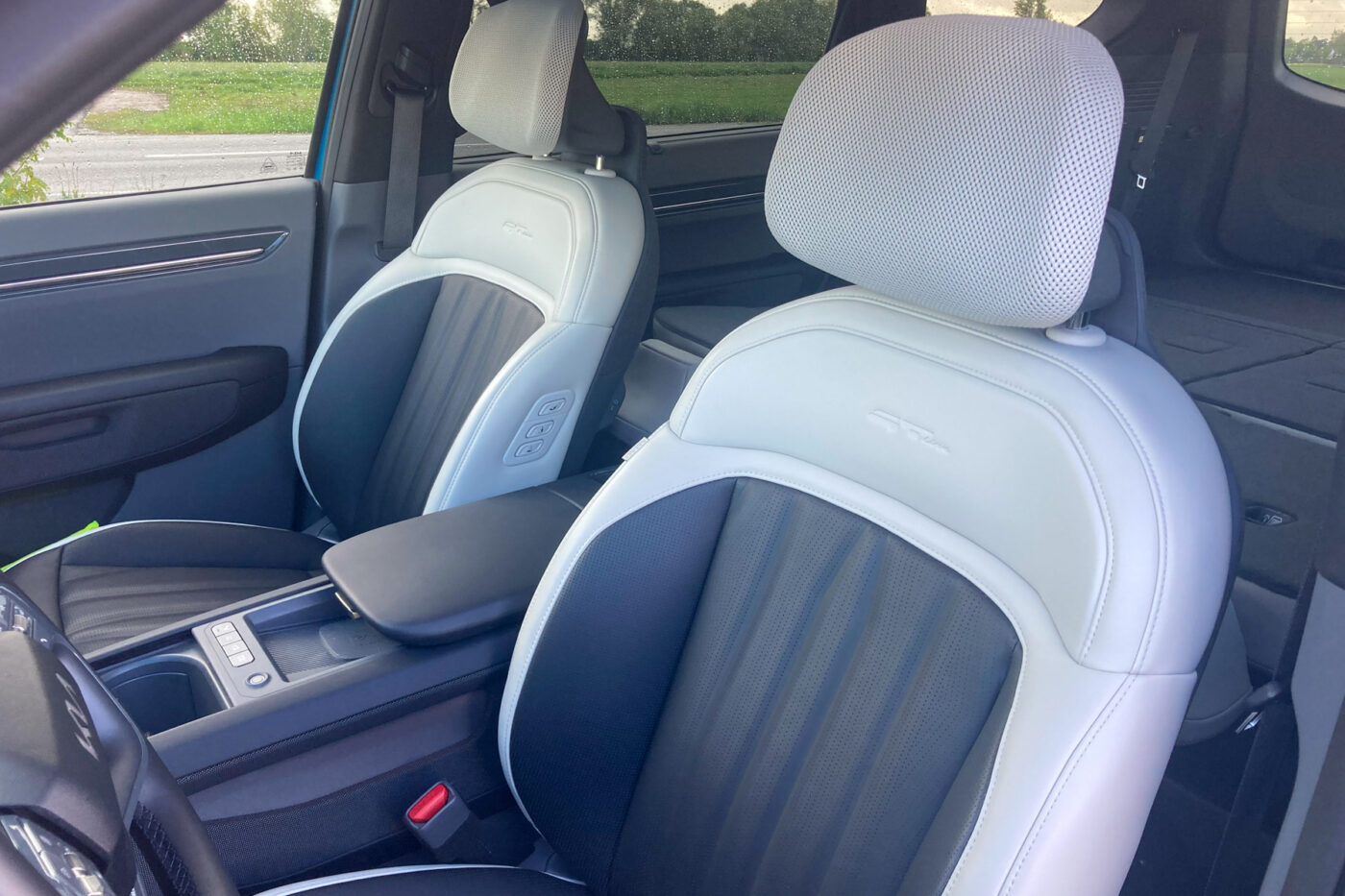
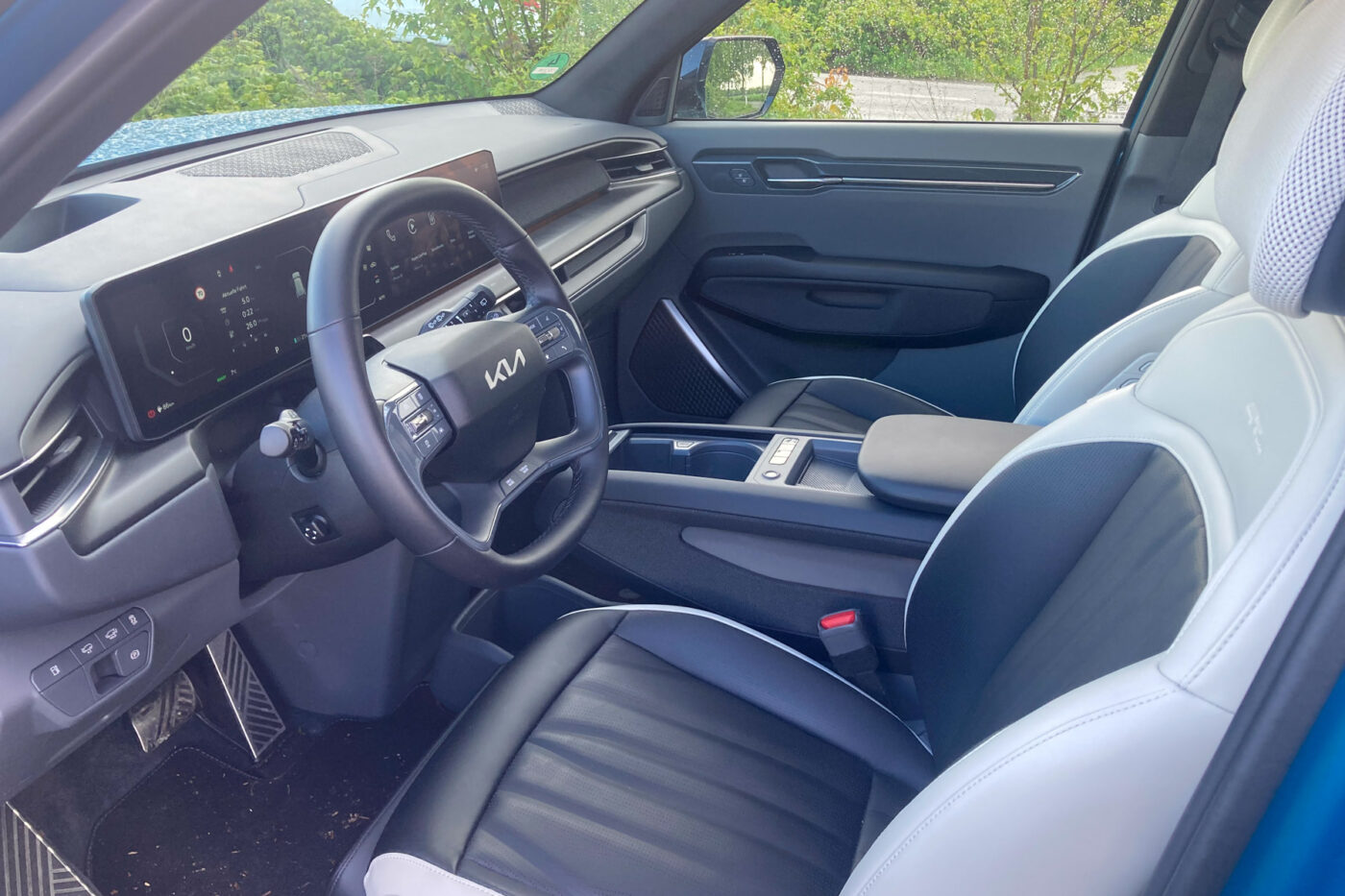
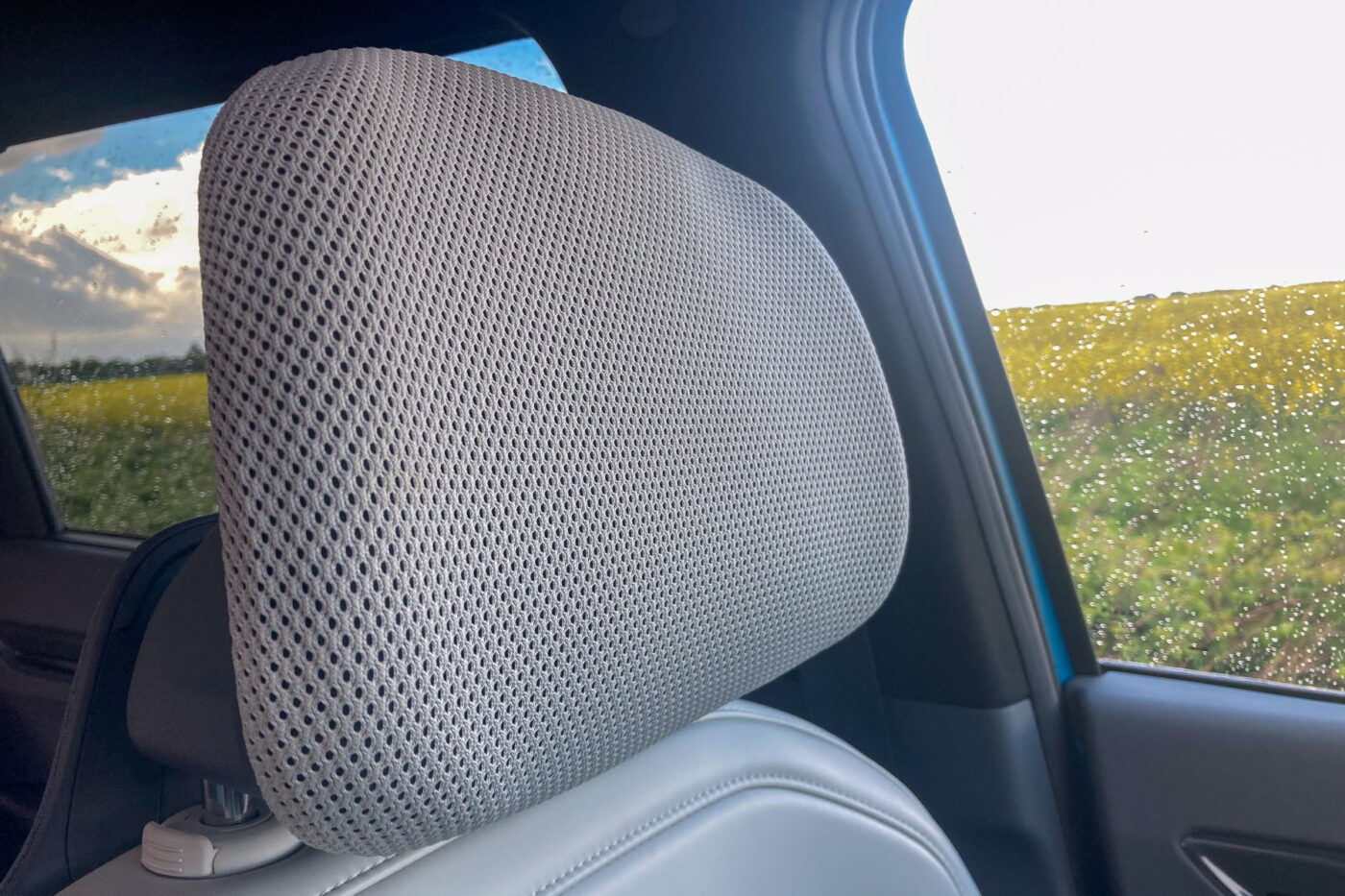
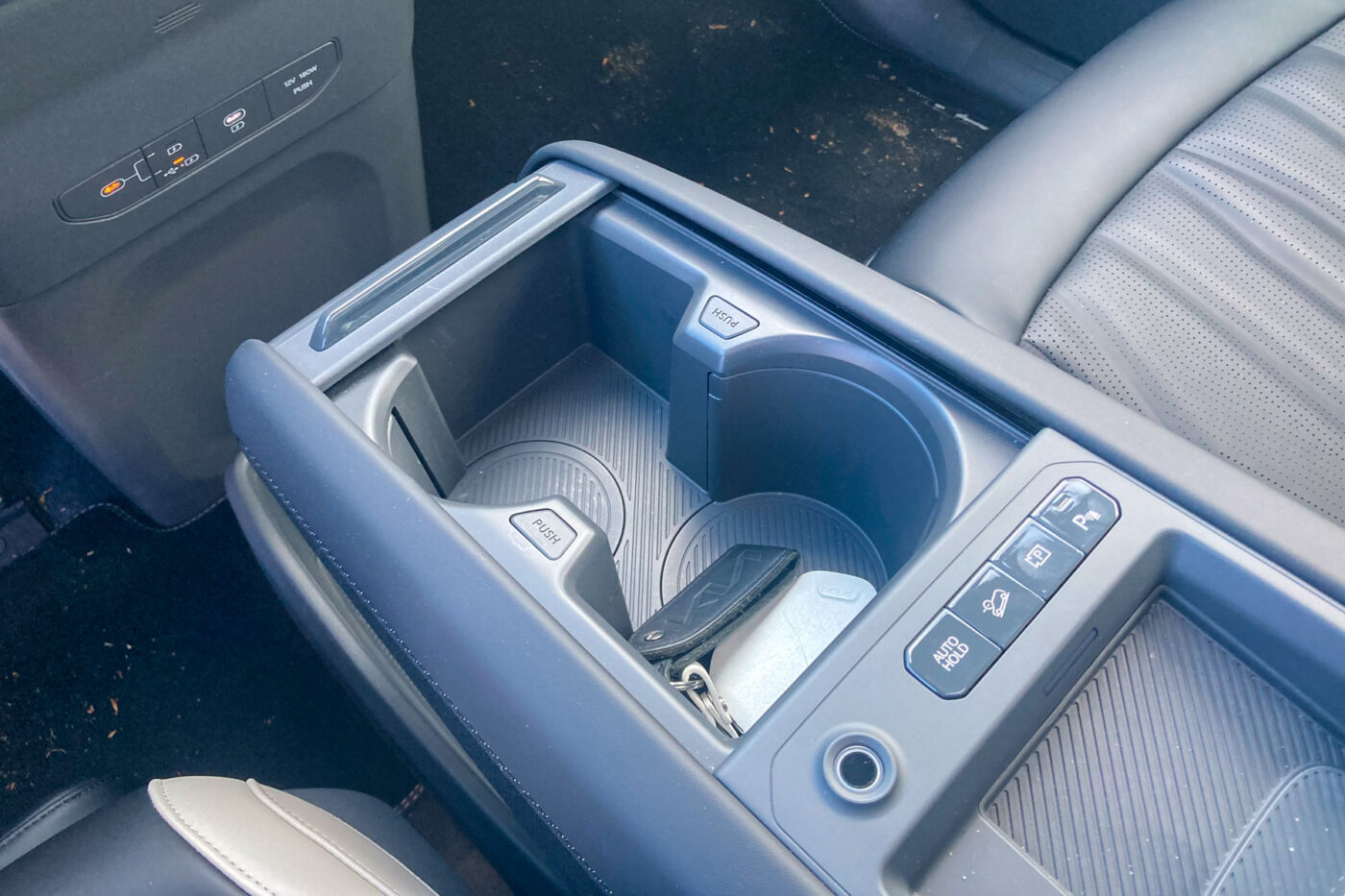
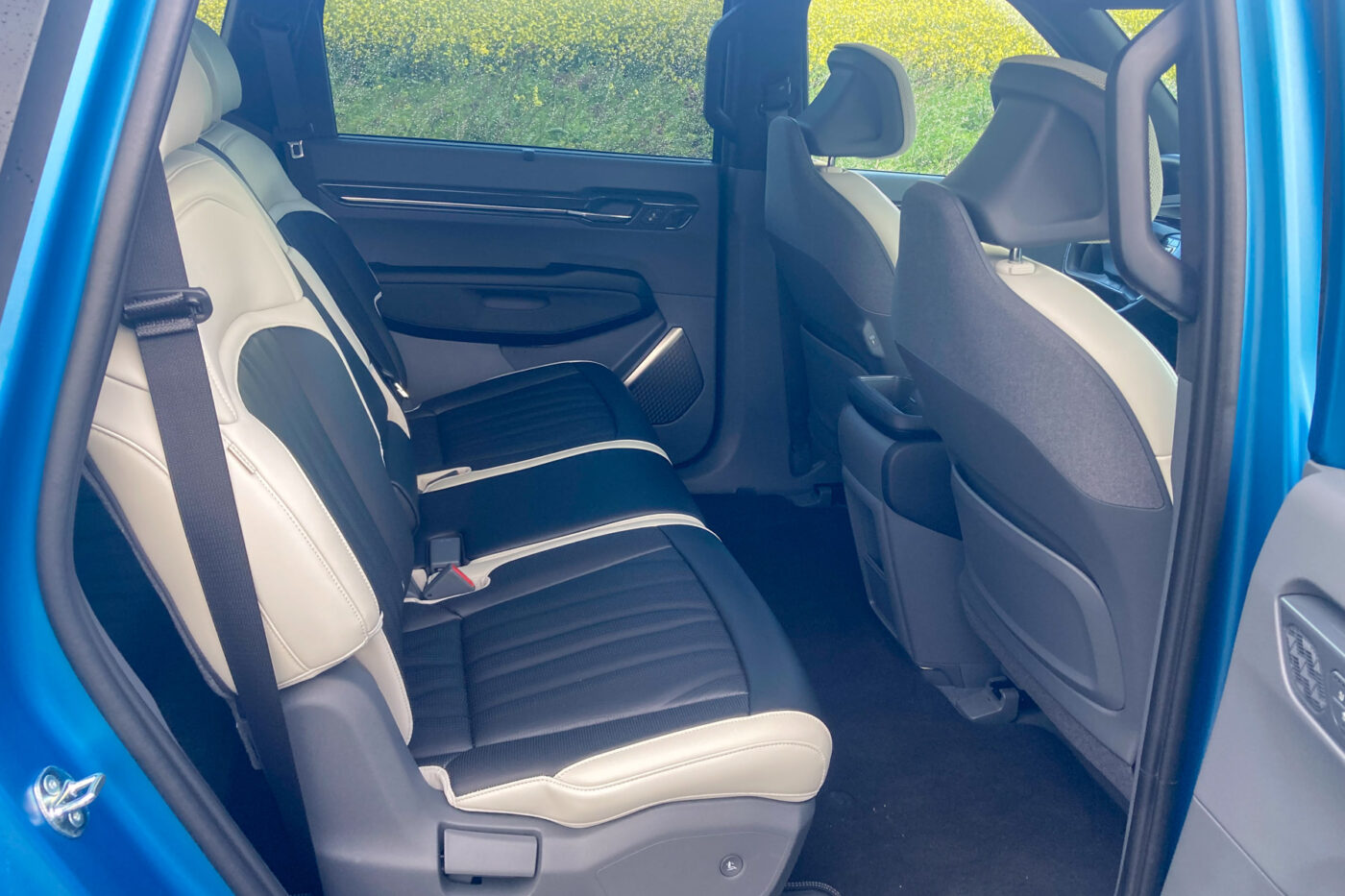
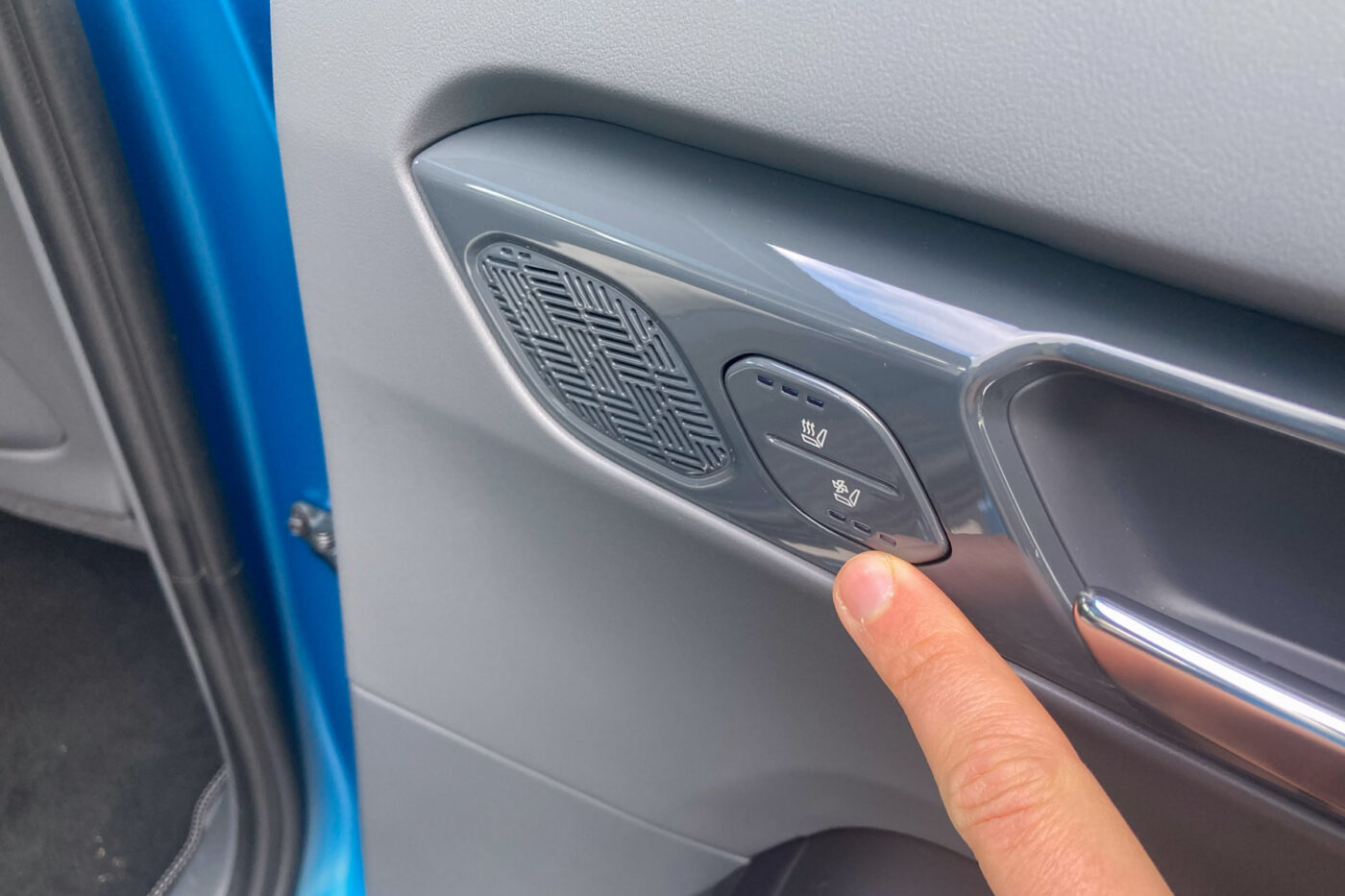
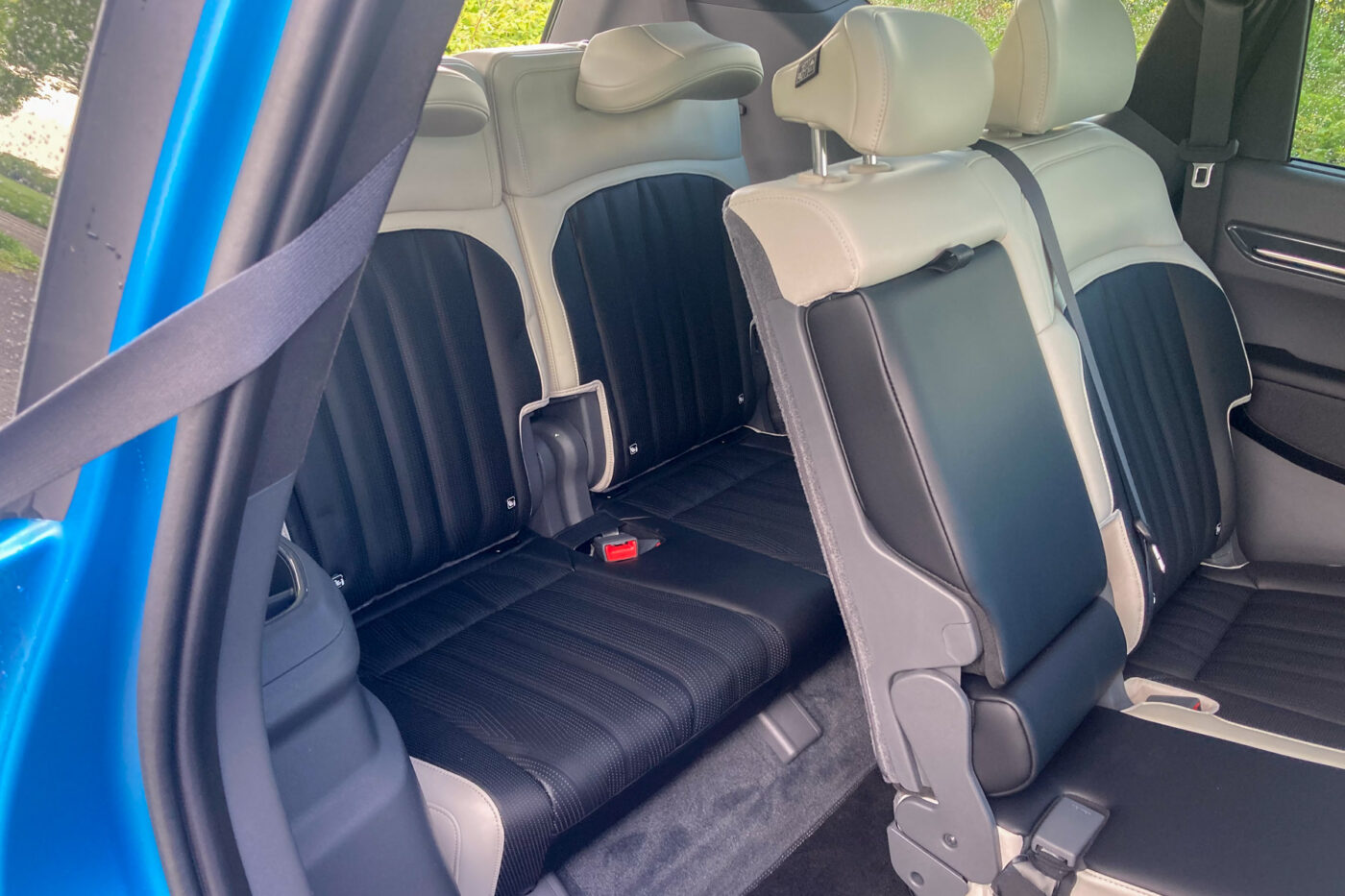
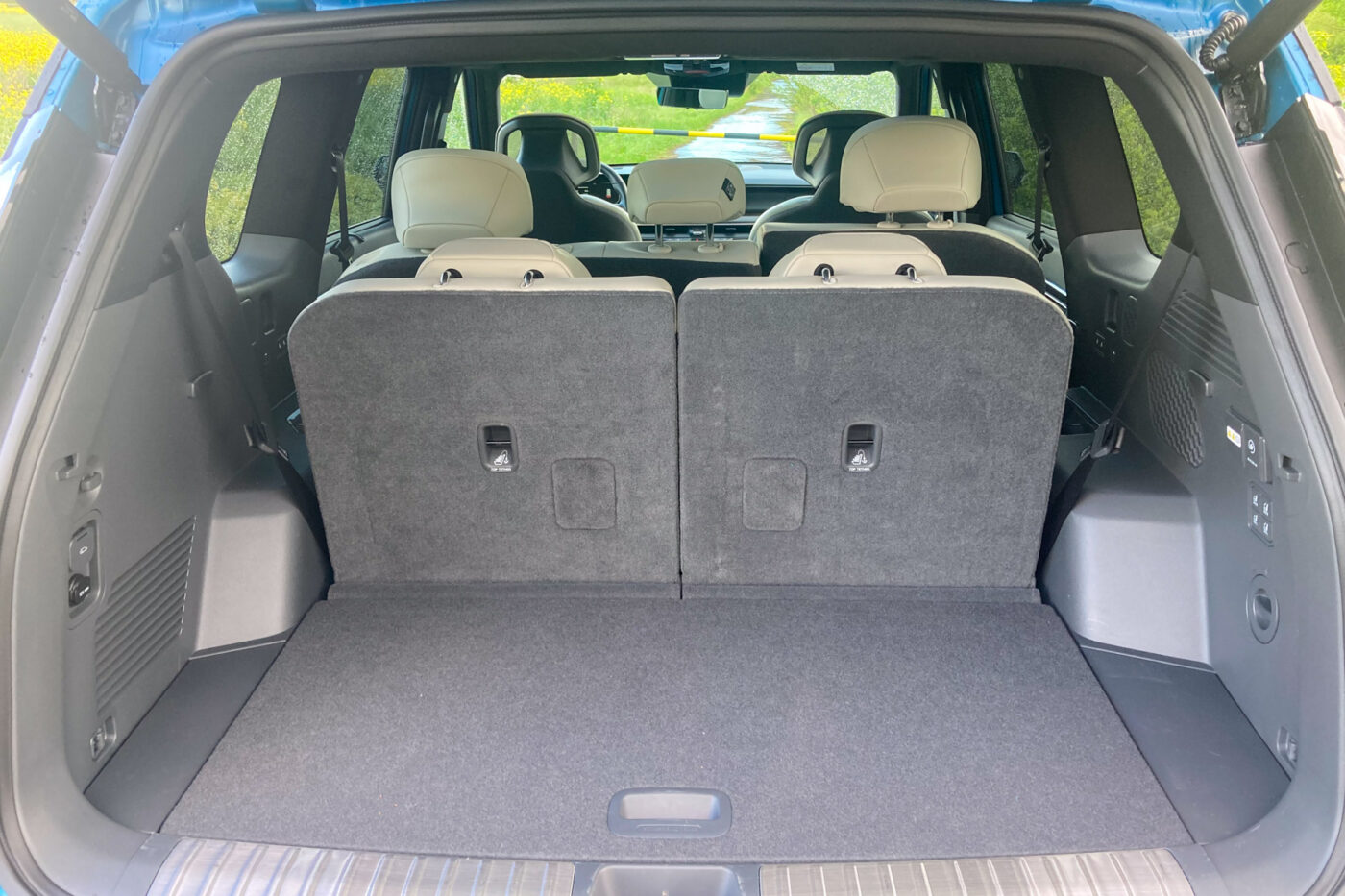
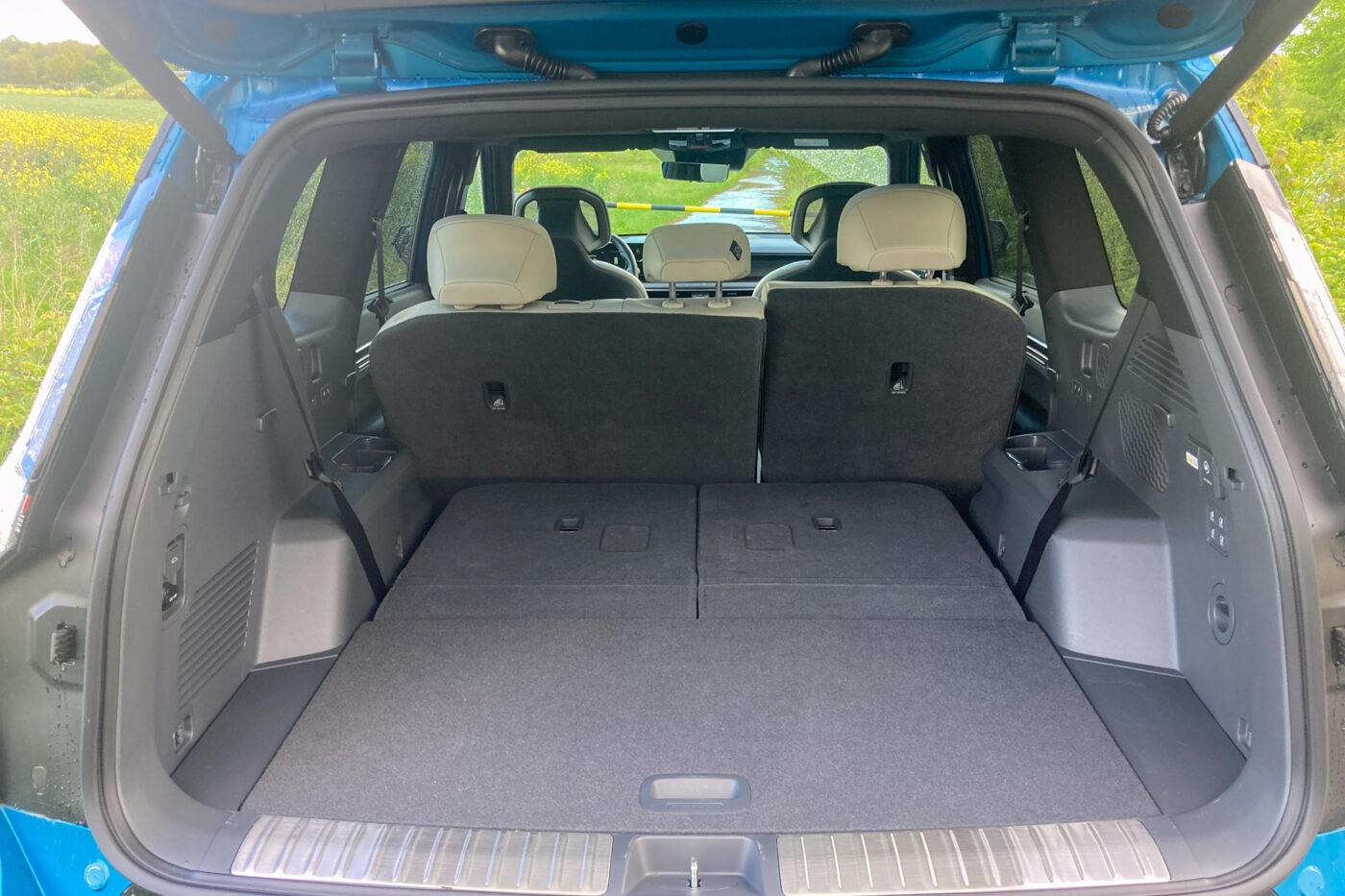
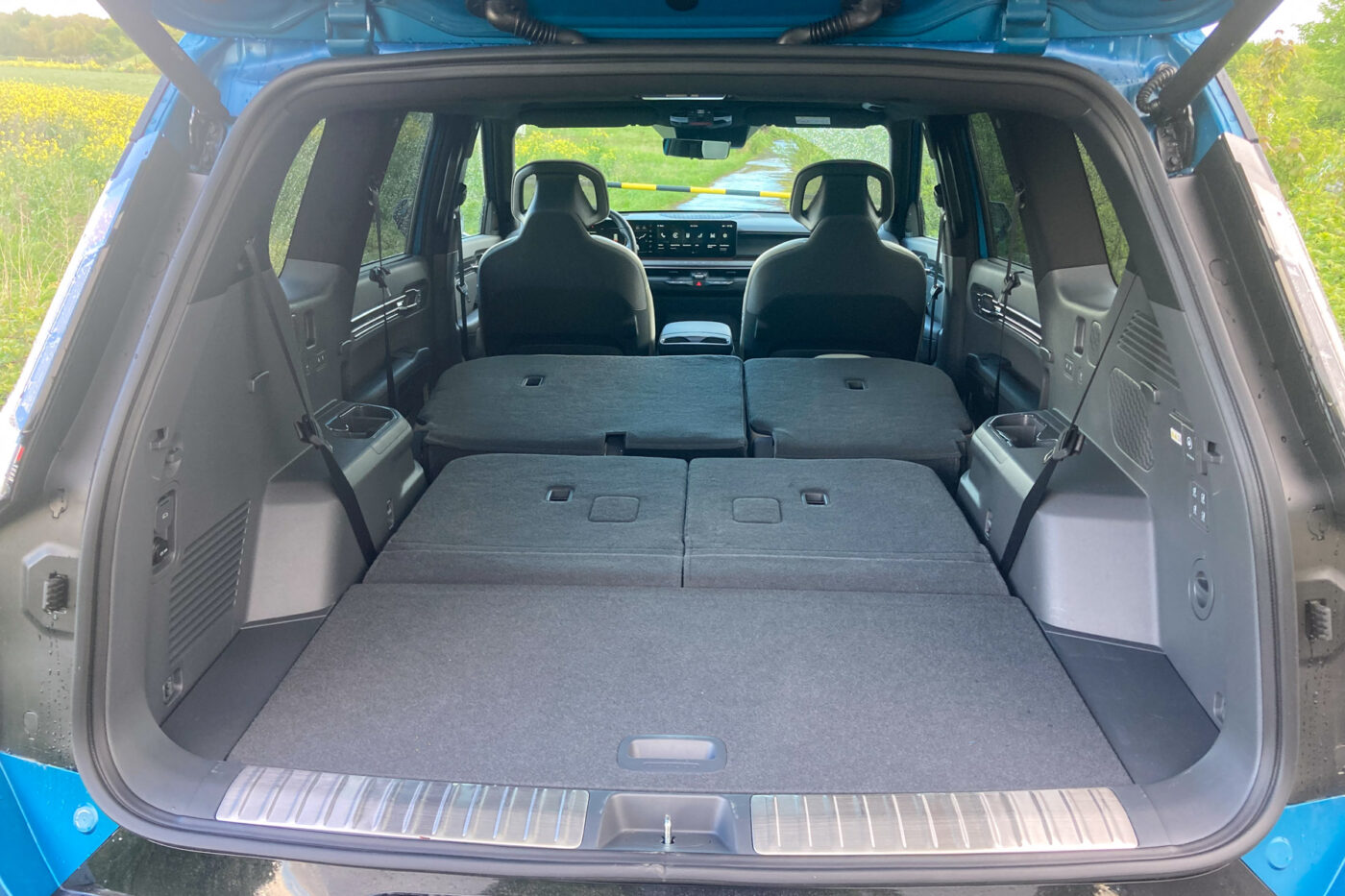
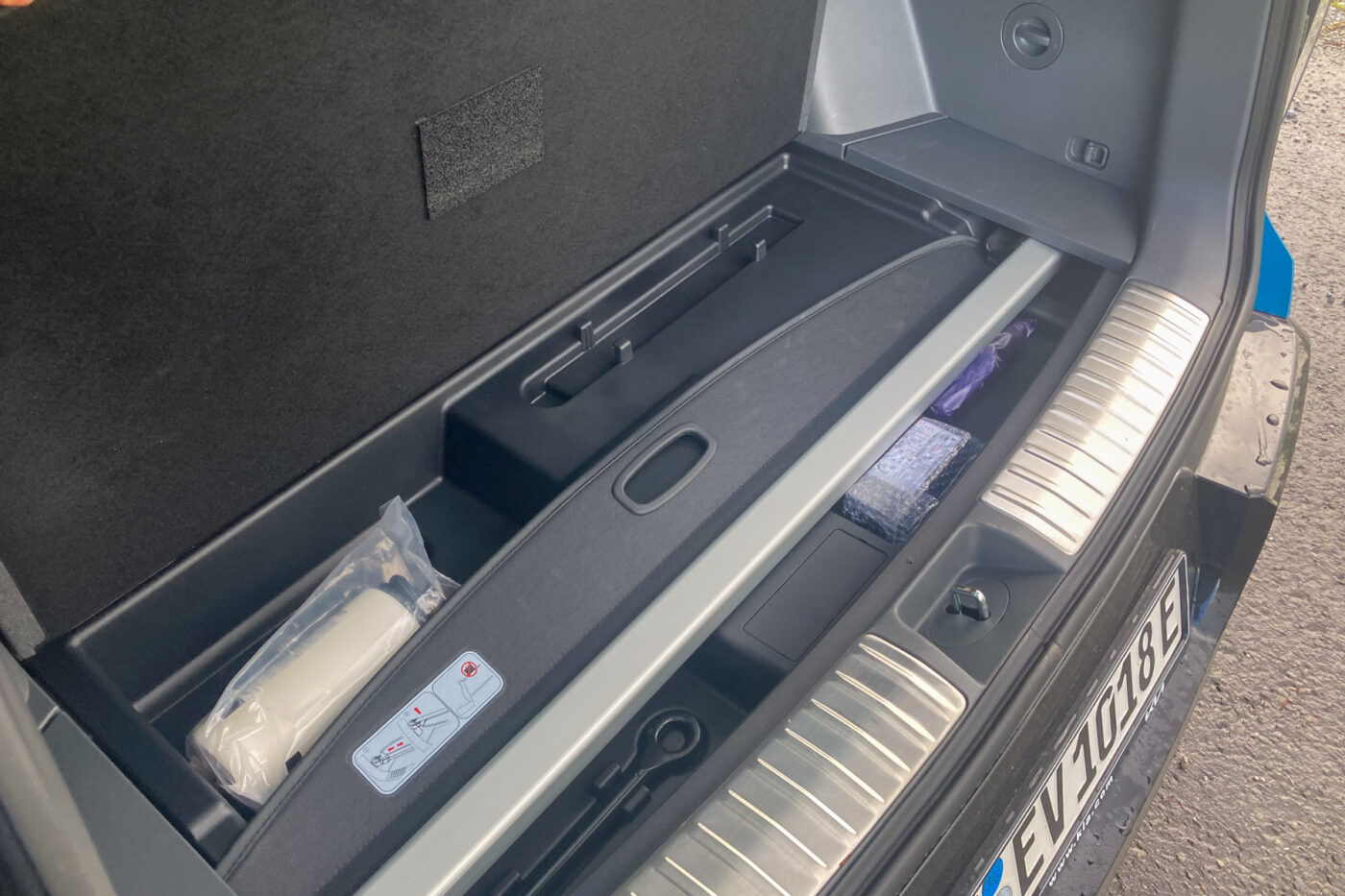
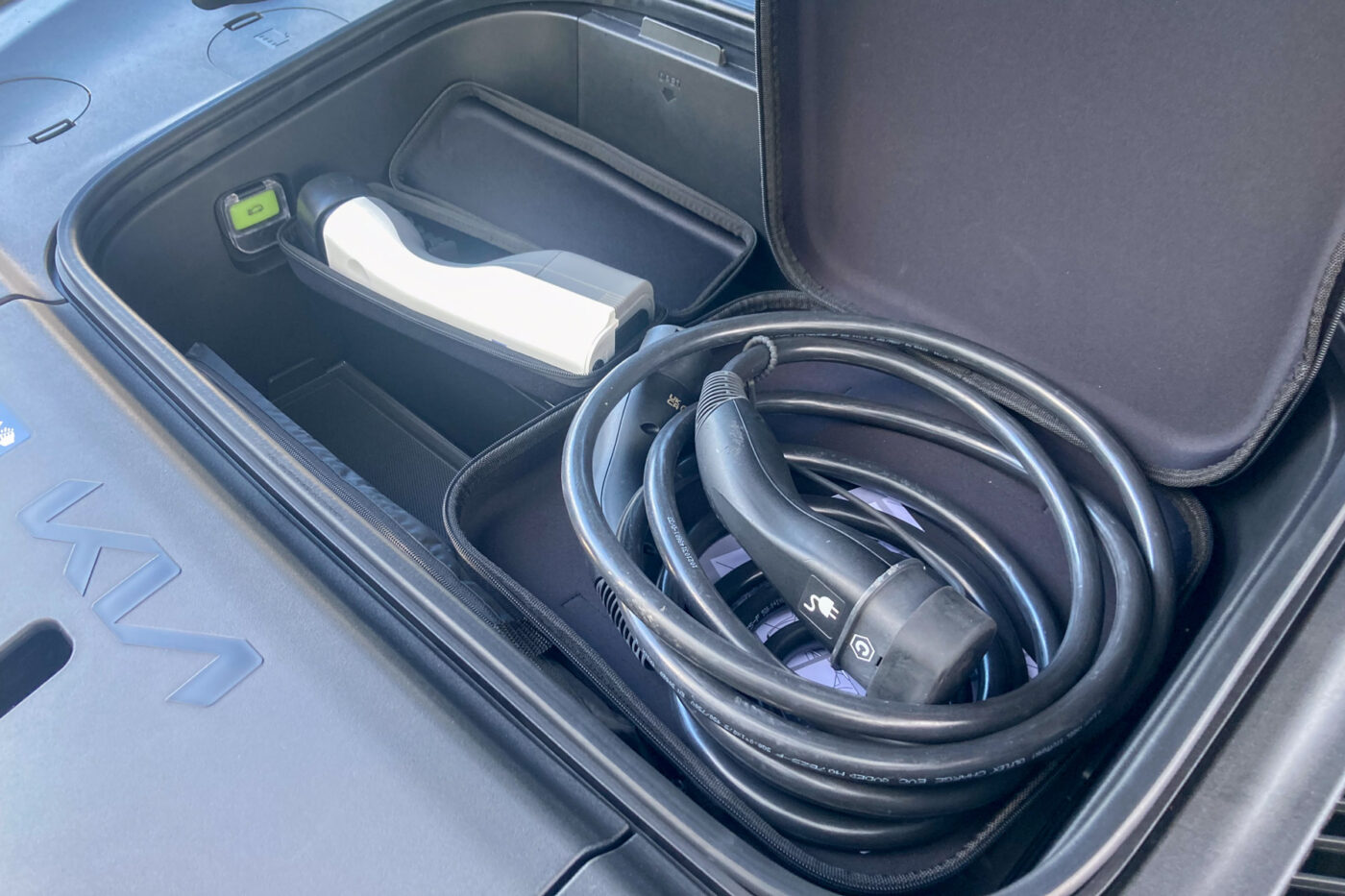
Although the EV9 does a few things differently in the interior, it is immediately recognisable as a modern Kia. Instead of the switchable touch bar in the EV6 and Niro EV, the EV9 has quick-select buttons for the most important functions flush-mounted in the dashboard. As these touch surfaces are positioned directly below the display, they were easier to operate than the EV6’s touch bar, which is more functional on paper but positioned lower down. The EV9 also has a few haptic buttons for climate control and another climate control unit between the infotainment touchscreen and the driver’s display. Overall, a well-thought-out and intuitive concept with minimal deductions: Depending on the seating position, the climate control unit is not always easy for the person behind the wheel to reach. And the fact that the four buttons in the centre console are made of smooth, high-gloss plastic doesn’t really fit in with the overall look with its rather matt surfaces.
Although a lot of plastic is used in an 80,000 euro car, the interior made a high-quality impression overall. The materials are cleanly installed, nothing creaked or rattled – not even in the numerous storage compartments. The fabric elements on the dashboard, the good amount of space mentioned and the good amount of light thanks to the large windows create a pleasant ambience. My guess: if the logos were masked off, passers-by would certainly not recognise a Kia in a blind test.
Conclusion
No question, at over five metres long and weighing 2.6 tonnes, the EV9 is a massive car. Customers should carefully consider whether such a large car is really necessary. I’m not questioning the fact that there is a need, but I do question whether this need is as common as the manufacturer seems to suspect. If a boot of this size or space for five adults with the option of two more seats is needed more often, the EV9 is a surprisingly good choice. Of course, it does not come close to the utility value of a five-metre-long van, but compared to other electric SUVs – such as the EQE SUV mentioned in the text – it is the van among electric SUVs. In terms of drive and other eMobility functions, however, it offers a performance that surpasses many other SUVs – not to mention van drives.
In other words, the niche for such a car may not be very large in Europe. But if this niche demand exists, the EV9 fulfils it very well. Even if it is a Kia for more than 80,000 euros. It is certainly better than a five-metre SUV with a fat V8 under the bonnet.
Looking at this product alone, Kia has succeeded in positioning the brand higher. The EV6 and even more so the EV6 GT were already heading in this direction, but the EV9 addresses (and in some cases certainly convinces) a customer group that had not previously considered the brand. At the same time, however, there are also many customers that Kia has previously addressed with a Picanto or Rio – i.e. chic but inexpensive small cars at the completely different end of the scale. Sooner or later, these customers should also be taken on board with electric mobility. Announcements such as the EV4 and EV3 are a step in the right direction – but by no means enough. From a business perspective, it is understandable in the short term for car manufacturers to push into higher-priced segments with better margins. However, affordable mobility is also important from a social – and therefore long-term business – perspective. And this must also become electric. It would, therefore, not only be desirable but urgently necessary to soon have a Kia version of a Hyundai Inster alongside an EV9!


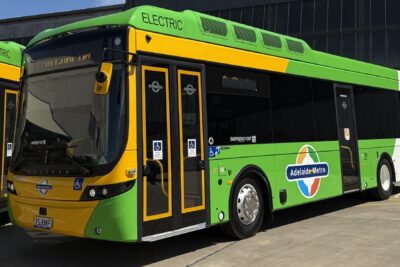
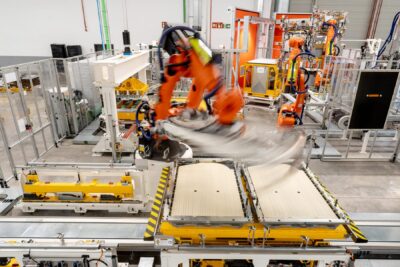
0 Comments